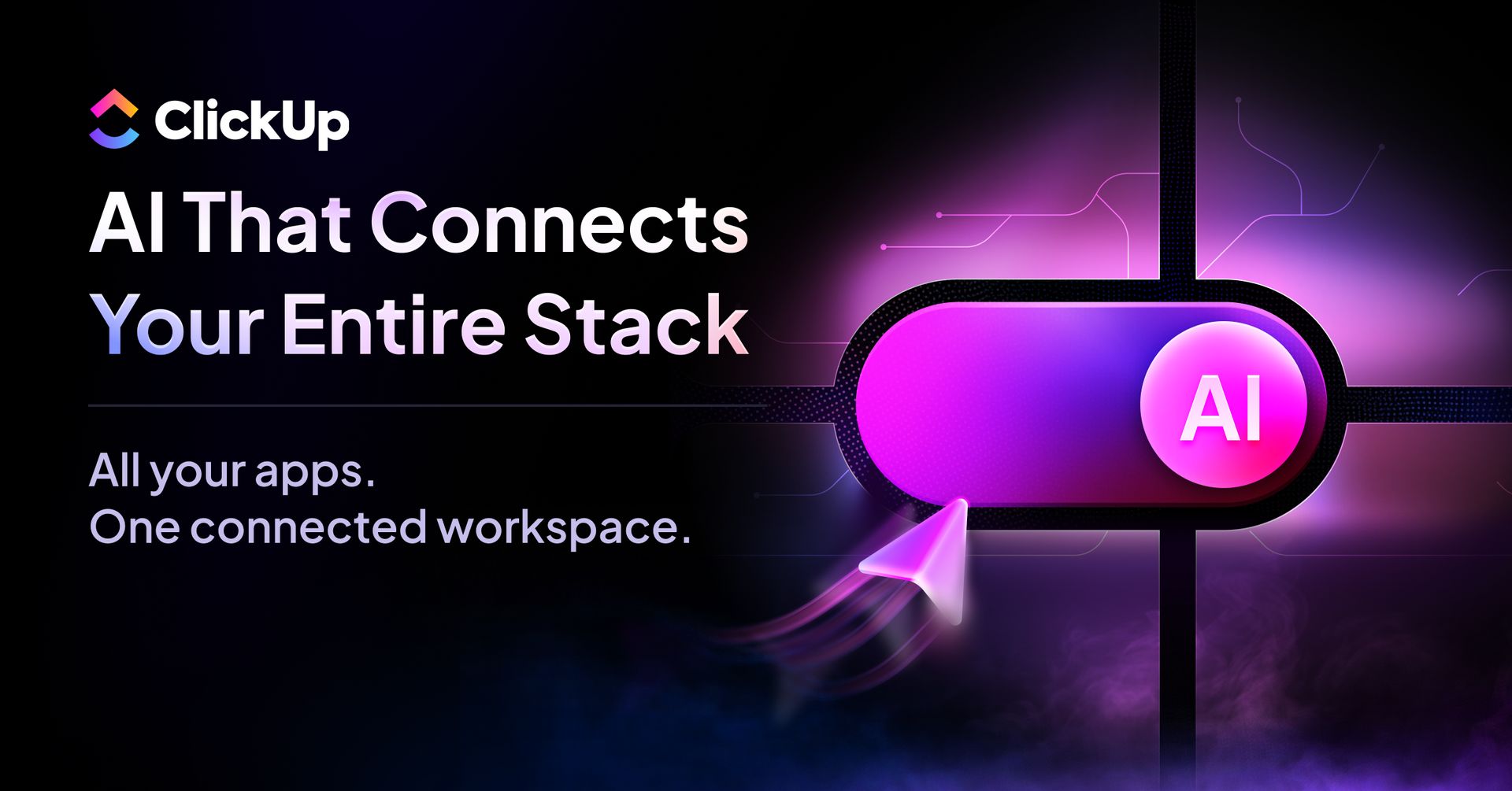- The GTM Guild
- Posts
- What to Say (and Not Say) in Your First Line
What to Say (and Not Say) in Your First Line
The First Line Isn't Just the Hook—It Is the Email
If you don’t win the reader in the first line, the rest doesn’t matter.
In cold email, the first sentence has a single job: earn the right to be read.
Not pitch. Not explain. Not show off.
Just—buy another 5 seconds of attention.
In today’s GTM Guild newsletter, we’re zeroing in on the line that makes or breaks your entire outbound motion:
What should you actually say in the first line?
And just as importantly: What should you never say?
The Only AI That Knows All Your Work
Most AI tools start from scratch every time. ClickUp Brain already knows the answers.
It has full context of all your work—docs, tasks, chats, files, and more. No uploading. No explaining. No repetitive prompting.
ClickUp Brain creates tasks for your projects, writes updates in your voice, and answers questions with your team's institutional knowledge built in.
It's not just another AI tool. It's the first AI that actually understands your workflow because it lives where your work happens.
Join 150,000+ teams and save 1 day per week.
First, the Mindset Shift:
You’re not writing a pitch.
You’re writing a reason for them to care.
Think of your email like a conversation at a networking event—if you opened with:
“We help B2B SaaS companies scale their retention through AI-driven onboarding flows.”
You’d get a polite nod—and then a swift exit.
Your first line has to sound like a real human reaching out to another real human, with context.
What to Say in Your First Line
Here are five cold email openers that consistently work—especially in B2B:
1. Hyper-specific Observations
“Saw your post on LinkedIn about hiring SDRs—looks like you’re scaling fast.”
“Just listened to your podcast with Lenny—loved the take on freemium retention.”
Why it works: It shows effort, context, and relevance. You’re not a bot. You cared enough to notice.
2. Timely Triggers
“Saw you just raised your Series A—congrats! That funding wave usually brings hiring pressure.”
“Noticed your new integration with HubSpot—curious how you’re thinking about partner activation.”
Why it works: Timing + relevance = high response probability. This is where deal velocity lives.
3. Customer-Lens Framing
“Spoke to two RevOps leaders last week who mentioned reporting blind spots after migrating to Salesforce.”
“A lot of Heads of GTM Ops I talk to are seeing dashboards break with product-led growth.”
Why it works: You’re talking with them—not at them. It frames your message in their reality.
4. Brief Credibility Drops
“I work with the ops teams at Glean and Notion—figured I’d reach out directly.”
“We helped Mercury’s Head of Growth solve something similar—wanted to share the pattern.”
Why it works: You’re proving relevance by association—without showing off.
5. Category/Trend Hooks
“We’re seeing more B2B SaaS teams move from demo-first to reverse trials—curious if that’s come up for you?”
“Outbound reply rates are falling across the board—but we saw a lift using a small tweak. Thought you might be testing this too.”
Why it works: You’re inviting conversation around trends, not pitching. Curiosity opens doors.
What Not to Say in Your First Line
These openers scream "template," "irrelevant," or worse—"delete me."
1. “Hope you’re doing well.”
It’s filler. They don’t know you. You haven’t earned the right to be personal.
2. “My name is [X] and I’m reaching out from [Y].”
This should be in your signature or visible in your sender info. Wasted prime real estate.
3. “We help companies like yours…”
You're already pitching. And worse—it's generic. You’re assuming before asking.
4. “Quick question…” (without a real question)
It’s a cheap trick—and people see through it. If you ask something, make it real.
5. “I wanted to reach out…”
You already did. Saying it again is like announcing “I’m walking in!” after you’ve entered the room.
The GTM Guild Framework:
Your first line should do one of three things:
Goal | Example |
|---|---|
Contextualize | “Saw you’re hiring a RevOps lead—big changes incoming?” |
Personalize | “Loved your blog post on usage-based pricing.” |
Relate a known pain | “Most early-stage GTM leads I meet are battling attribution chaos.” |
Bonus filter: Can this line be copied and pasted to 10 other people? If yes—rewrite it.
Final Tip: Think Inbox, Not Copy Doc
Remember—your first line appears inside the preview text of their inbox.
It needs to earn the open before it earns the reply.
So next time you write an email, ask yourself:
Is this opening line relevant?
Is it human?
Would you respond to it?
If not, start again. It’s the most important sentence in your outbound playbook.
What to Do This Week
Take 3 of your latest cold emails.
Just rewrite the first line using the “Observation + Timing + Relevance” filter.
Watch what happens to your reply rate.
Until then,
— The GTM Guild

